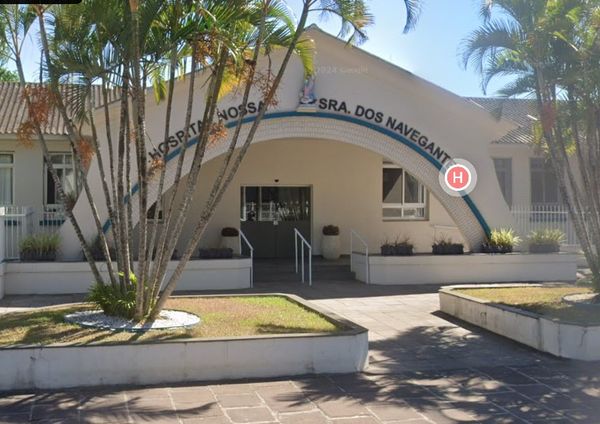
This time last year, I was having the worst chemotherapy session of my life. It involved six attempts to get a cannula in and make it stay, one of which resulted in a blown vein. At least I had a phobia of needles beforehand, so I didn’t need to add that to my list afterward.
And that was my last session.
When I finished my treatment and went through the final rollercoaster of nausea, fatigue, and things we shall not speak of, that was it. It was time to go back to life as usual.
The only problem was, I couldn’t.



The doctors give you instructions about what to do while you’re undergoing treatment, but once everything is over, apart from blood tests and scans, it’s up to you to get back on track. If you were fit before the treatment, you need to figure out how to get back to that. I started with walks because that’s all I could manage. I know that’s all I could manage because not long into my first walks, I’d break out in a full-body sweat and need to sleep for hours upon returning home.
When I progressed to the gym, it was a case of one step forward and several back. I could string together a few days of working out before I’d wake up with a mouth full of ulcers, feeling like I’d been hit by a truck. But the worst, most mentally draining part was that I’d never see the truck coming. I’d be fine one day and destroyed the next.
I should preface the rest of this piece by saying I was never overly interested in fitness trackers before, but I backed myself into a corner. To help keep my mental health in check and get my physical health back, I set myself a huge goal and entered a regional motorcycle racing championship. So when I reached out to Garmin and asked if there was anything that could help a post-chemo thirty-year-old get fit enough to race, I was astonished by how strongly the rep stood behind the Forerunner 965’s abilities.
I needed to get fit, think decent amature athlete levels, and lose around 30 pounds. Achieving one of these feats alone is tough, but both, in a post-surgery/chemo state, was a huge ask from a watch. At least, that’s what I thought.

Plugging In
The Forerunner gets to know you, and the more it does, the better the information becomes. At the start, it felt like trying to decipher the matrix, but as I progressed and trained with the watch, I understood the importance of each metric. These are the ones that keep me in check on the daily.
Body Battery
The Body Battery was the feature I looked forward to the most before getting the watch. It’s as simple as it sounds and tells you how much energy you have at any given moment throughout the day.
As your day progresses, there’s a graphic that shows how your activities, rest, and stress levels work together to drain your energy reserves or help you feel more rested. I used this information to change habits, routines, and even what and when I eat. These changes haven’t been difficult to implement, and it’s fun to identify causes and come up with remedies.


The things I do to give myself a better Body Battery are the building blocks of everything to come. These are the almost microscopic adjustments I make to my day-to-day, and I eventually see changes on a macroscopic level.
Training Readiness
Time is not on my side. I still need to get a lot fitter and lose a decent bit of weight if I hope to be competitive in my first racing season. Unfortunately, I’m often mentally willing but physically unable to train as intensely or frequently as I want. And this is where Garmin’s Training Readiness score is a Godsend.
With the pent-up energy of a caged bull, it took a lot for me to hold back and trust the Forerunner when it told me not to train. However, once I started following the recommendations, there was a night and day difference in my health. I dare say that this is the longest I’ve stayed healthy while training since I had severe mono 14 years ago.
I don’t train when the watch says not to, and I train when it tells me to, regardless of how tired I feel. And I’ve stayed healthy, which is quite literally the aim of the game.



Before the Forerunner, I’d second-guess myself if I thought I needed a rest day, which undoubtedly led to overtraining. But now I feel no guilt when I need to recover, and that lifts an immense mental weight.
Heart Rate Variability (HRV)
I must admit that I didn’t know what heart rate variability (HRV) was before tackling this fitness journey. But I knew that if it takes the Forerunner 965 four weeks to calculate my baseline, it must be important. And it is.

In the early days of owning the Forerunner, an unbalanced HRV combined with unusually high stress levels foreshadowed a terrible viral infection. The watch told me I was getting very sick. That was the worst virus I’d had in a long time, but in hindsight, it was a blessing because it threw my skepticism out the window and gave me complete faith in Garmin’s technology.
Without this incident, I wouldn’t have been so quick to follow Garmin’s training advice, which I believe is what’s kept me so healthy for so long.


Now, I value my HRV above all else, and I find it to be the best indicator of how my body is dealing with stress in all its forms. I’ve watched it drop and become unbalanced when sleep-deprived and slowly rise when I eat, train, and rest well. It gives me a fair estimate of whether I’m on or off the right path and allows me to catch myself before I stray too far and get sick.
Win the Morning
“Win the morning, win the day” is about as cliche as it gets, but I need a good morning routine to tackle my day with some modicum of competence. That means getting outside for a walk within about 15 minutes of waking up, taking a cold shower afterward, and not looking at my phone until all this is done. But there are some mornings that I’d much rather scroll on Instagram before rolling into a hot shower, thankfully, Garmin’s Morning Report massively reduced the urge to do it.



Each morning I’m greeted by a picture of steaming coffee and a question: Ready for your morning report? Instantly, I get a nervous flutter in my stomach that wakes me up. It might not sound cool, but I get excited to see how I slept, what my training readiness is, and if my HRV is balanced and improving. Each report ends with a short inspirational sentence, and by then, I’m ready to get outside for a walk. The 32GB of built-in memory means I don’t have to interact with my phone for podcasts or music until I’m ready for work.
More than just waking me up with enthusiasm, my morning report is the best snapshot I get into what my health and energy levels look like. It helps me set expectations, whether that’s planning a hefty training session or allowing myself to take a rest day.
A Tiny Gripe
This watch has been such a game changer for my overall well-being that I almost feel an emotional attachment to it, but I do have one gripe. It has touchscreen capabilities, but not all the time. I can swipe through hours of data showing my heart rate, but I can’t swipe down to end a workout—for that, I need to use the buttons.



It’s a tiny inconvenience, but unfortunately rears its head when my heart’s beating out of my chest, and I want everything to be as intuitive as possible.
Looking Forward
Before dawning the Forerunner 965, the skeptic in me wondered how knowing some health metrics would make a meaningful difference to what seemed to be an impossible task: getting fit after chemotherapy. If I wasn’t trying to majorly change my fitness level or achieve something physically demanding, the information from my Garmin would mean jack all. But I am, and the information helps me to make incremental changes that have a compounding effect.
The more I put into making my lifestyle healthier and more active, the more I got out of this Garmin. The metrics don’t matter in isolation, but when they’re backing up positive actions, they’re invaluable.
The watch provides the dots and I connect them how I see fit. Since looking at the information through that lens, I’ve changed what and when I eat, the intensity and frequency with which I train, the time I go to bed, and how often I consume alcohol, to name but a few. As I’ve made these changes, more dots appear for me to connect, which will undoubtedly make me feel better.

I’ve come a long way since my 10-minute, full-body sweat walks, but this is just at the foot of the mountain or maybe base camp. I’m staring down the barrel of a six-month-long motorcycle championship. I still need to lose another 15 lbs and get fitter and stronger. So, if you’ve read this far, you’ve made it to the start of my journey, and I hope you’ll still be here when I give an account of what it took for me to get to my first race.







